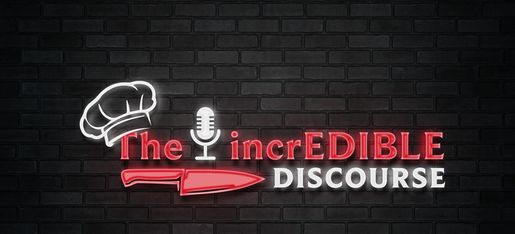Savor the flavor

Fry Like a Chef: The Secret to Perfectly Golden, Crunchy Foo
Introduction
Frying is a combination of science and technique. When done right, it creates a golden, crispy crust with a juicy, flavorful interior. However, when done incorrectly, it can result in food that is greasy, soggy, or unevenly cooked. This guide will teach you the essential techniques to fry like a professional chef, helping you choose the best oils, maintain the perfect temperature, and achieve consistently crispy results every time.
Best Oils for Frying
Choosing the right oil is critical for successful frying. Oils with a high smoke point prevent burning, off flavors, and excessive oil absorption. Here are the best choices:
- Peanut Oil – High smoke point (450°F/232°C), neutral taste, ideal for deep frying.
- Canola Oil – Affordable, widely available, with a smoke point of 400°F/204°C.
- Vegetable Oil – A blend of different oils, good for general frying.
- Sunflower/Safflower Oil – Clean flavor with a high smoke point (440°F/227°C).
- Avocado Oil – A premium option with a 520°F/271°C smoke point, excellent for extra-crispy results.
Why Smoke Point Matters
The smoke point is the temperature at which oil begins to break down and release unpleasant flavors. Using an oil with a low smoke point can cause food to taste burnt or rancid. Always choose an oil that can withstand high temperatures without breaking down.
Maintaining the Right Temperature
Temperature control is the key to crispy, golden food. Too hot, and your food will burn before it cooks inside; too cold, and it will absorb oil and become greasy.
Key Temperature Ranges:
350-375°F (175-190°C) – The ideal range for frying most foods. 325°F (163°C) – Best for frying delicate items like tempura. 375-400°F (190-204°C) – Good for extra-crispy foods like French fries.
Tips for Temperature Control:
Use a Thermometer – A digital or deep-fry thermometer ensures accuracy. Preheat Your Oil – Always heat the oil before adding food to prevent excess absorption. Don’t Overcrowd the Pan – Too much food at once lowers the temperature, leading to sogginess. Let the Oil Recover – Allow the oil to reheat between batches for consistent results. Test with a Wooden Spoon – Dip a wooden spoon handle in the oil; if bubbles form around it, the oil is ready.
Why Coatings & Batters Matter
Your coating or batter significantly affects the texture and crispiness of fried food. Here’s a breakdown of different options:
- Cornmeal Dredge – Provides a crunchy, grainy texture, great for seafood like shrimp and fish.
- Panko Breadcrumbs – Extra crispy, light texture, ideal for cutlets, chicken, and seafood.
- Tempura Batter – Light and airy, made with cold water for a delicate crunch.
- Beer Batter – Uses carbonation to create an ultra-light, crispy crust.
- Flour & Egg Wash – Classic technique for Southern-style fried chicken.
Pro Tip:
For extra crispiness, mix a little cornstarch with your flour dredge. It creates an ultra-light, shatteringly crispy crust!
Common Frying Mistakes & How to Fix Them
Avoid these common pitfalls to achieve perfect fried food every time:
Oil is Too Cold – Food absorbs oil, making it greasy.
Fix: Always preheat oil to the correct temperature.
Overcrowding the Pan – Drops the oil temperature.
Fix: Fry in small batches.
Skipping the Drying Step – Wet food won’t crisp properly.
Fix: Pat food dry before frying.
Not Draining Properly – Excess oil leads to sogginess.
Fix: Use a wire rack instead of paper towels.
Using the Wrong Coating – Batter absorbs too much oil or burns too fast.
Fix: Choose the right coating based on the food type.
How to Get the Perfect Golden Crust Every Time
Season at Every Step – Add seasoning to flour, batter, and post-frying for maximum flavor. Use Cornstarch for Extra Crispiness – A cornstarch-flour mix creates a superior crust. Let Batter Rest – Resting the batter helps it adhere better to food. Shake Off Excess Coating – Prevents clumps and uneven frying. Let Fried Food Rest on a Rack – Keeps the crust crisp and prevents steaming.
Recommended Tools for Frying
Using the right tools makes frying easier and safer. Here are the essentials:
- Deep-Fry Thermometer – Ensures precise oil temperature.
- Heavy-Duty Frying Pan/Dutch Oven – Retains heat well and distributes it evenly.
- Wire Rack & Sheet Pan – Keeps food crispy while draining excess oil.
- Spider Strainer or Slotted Spoon – Ideal for safely removing fried food.
- Tongs with Heat-Resistant Tips – Helps handle food without damaging the crust.
Quick-Reference Chart: Frying Temperatures & Ideal Oils
Final Thought:
With the right oil selection, temperature control, and coatings, you can achieve perfectly crispy, golden results every time. Keep practicing and refining your technique to master the art of frying.
Want More?
For more pro tips, exclusive recipes, and behind-the-scenes content, visit The IncrEDIBLE Discourse and join our culinary community!
Copyright © 2025 The incrEDIBLE Discourse - All Rights Reserved.

Level Up Your Cooking
Join The Monthly Mise
Chef-level tips. Real lessons. Zero fluff.
This website uses cookies.
We use cookies to analyze website traffic and optimize your website experience. By accepting our use of cookies, your data will be aggregated with all other user data.